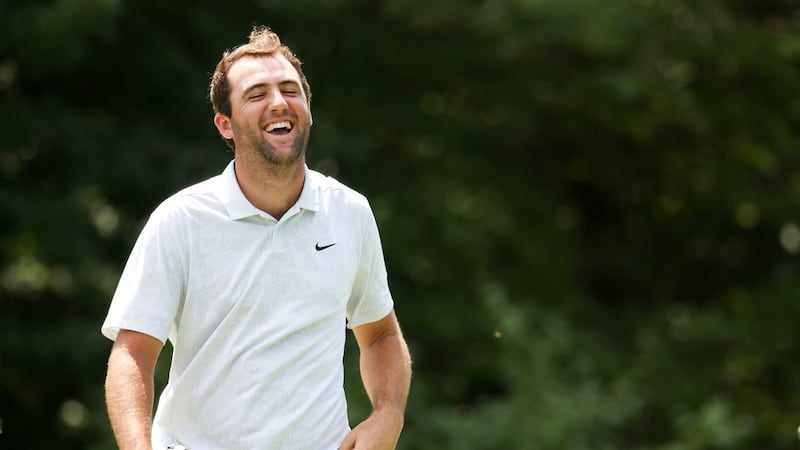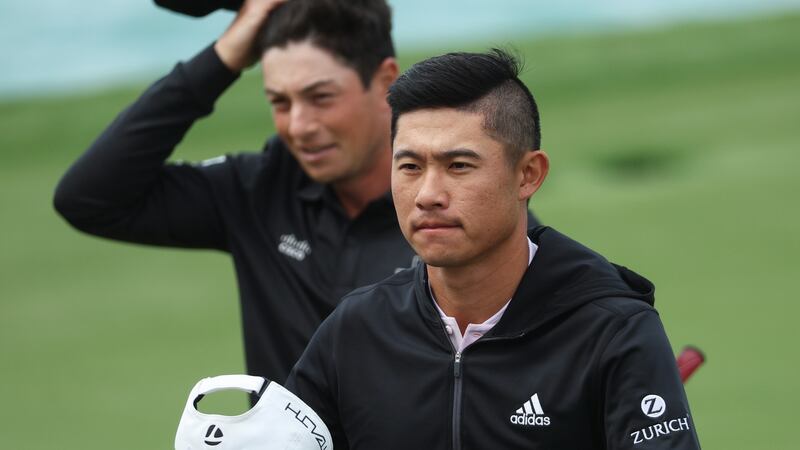On the eve of the PGA Tour’s Florida swing, a four-tournament series in March that sets the stage for four months featuring Major golf championships, Rory McIlroy, 32, made a revealing observation.
McIlroy, a one-time child prodigy turned four-time Major winner, said the results of recent tour events were making him feel especially old. McIlroy was only half joking. But with Sunday’s conclusion of the Valspar Championship, the last chapter of the tour’s trip through the Sunshine State, McIlroy’s sentiments reflect an unmistakable reality: Men’s professional golf is being transformed by a sweeping youth movement.
Even being a creaky 32 is enough to keep you out of the upper echelon. Sort of. A week ago, the top five players in the men's world golf rankings - in order, Jon Rahm, Collin Morikawa, Viktor Hovland, Patrick Cantlay and Scottie Scheffler - were under 30-years-old, which was the first time that had happened since the rankings were instituted in 1986. While Cantlay turned 30 on Thursday, that does not diminish the headway the game's youngest players are making.
It is particularly noticeable because many of the most dominant names in men's golf during this century are now further from the top of the rankings than ever: Phil Mickelson is 45th, Justin Rose is 51st, Jason Day is 99th and Tiger Woods, who has not played a tour event in 16 months, is 895th.
Moreover, no one expects the 20-something brigade to retreat. “I’ve been saying it since day one, the young guys, we all believed in ourselves when we got to the tour,” Morikawa, 25, said. “That’s not going to change. The recent play just shows how good the young guys who are coming out can be - how good this young pile is.”
The remaking of the rankings has been most dramatic over the past several weeks. It began a week before the first PGA Tour Florida event this month when Joaquin Niemann, 23, won the Genesis Invitational near Los Angeles. It continued when Sepp Straka, 28, was atop the final leaderboard at the Honda Classic in Palm Beach Gardens, Florida.

Next, Scheffler, 25, claimed the Arnold Palmer Invitational in Orlando. The following week, on the east coast of Florida, Cameron Smith, 28, won a Players Championship that was battered by bad weather over five days. Finally, on Sunday, near Tampa, Sam Burns, 25, won the Valspar Championship, a tournament he also won last year. Burns, who moved to 10th in the world with Sunday's victory, defeated Davis Riley, 25, in a playoff. Justin Thomas, 28, and Matthew NeSmith, also 28, tied for third. Matt Fitzpatrick, 27, was fifth.
Thomas, a former world number one, praised the growing accomplishments of this younger set even though the competition has helped push his current world ranking to seventh.
“I’ve played some pretty damn good golf, but if you’re not winning tournaments now, you’re getting lapped,” Thomas said. “That’s just the way it is, which just goes to show the level of golf being played.
“But the jealous side of me wants that to be me.”
It is a reasonable expectation that youth will continue to have an impact heading into the four golf Majors contested from April to July. While the truism is that experience matters greatly at the Masters, it is also worth remembering that Will Zalatoris, 25, finished second at last year's Masters. Xander Schauffele, 28 and ranked ninth (one behind McIlroy), played in the final group on the last day of that Masters with eventual winner Hideki Matsuyama.
At this year's US Open, Rahm, 27, is the defending champion. Scheffler, Schauffele and Morikawa were all in the top 10 last year, as were Daniel Berger, 28, and Guido Migliozzi of Italy, who is, of course, just 25. At last year's PGA Championship, Scheffler, Zalatoris and Morikawa were among the top 10 finishers; Morikawa is the reigning British Open champion. Oh, yes, at that event a year ago, Jordan Spieth was second and Rahm was third.
There are a handful of theories to explain this youthful surge, and most centre on the heightened professionalism that has become commonplace even in competitions for top golfers in their late teens or early 20s. That has in turn raised the calibre of golf at the American collegiate level, where rosters are also now frequently dotted with elite players from around the world.

And since every conversation about modern golf must have a tie to Woods, there is also a belief that more agile and finely honed athletes have been flocking to golf for more than 20 years - a tribute to Woods' effect on sports worldwide. Put it all together and those graduating from pro golf's chief minor league, the Korn Ferry Tour, seem less intimidated by the big leagues and more ready to win, or at least contend, right away.
"It's a reflection of the system at work," PGA Tour Commissioner Jay Monahan said. "The athleticism, the youth, the preparedness, the system is working. You can talk about the top five, but you can extend it past the top five and into the top 30."
Sixteen of the top 30 golfers are 30 years old or younger. Scheffler gave credit to Spieth, who won his first PGA Tour event when he was 19 and nearly won the Masters when he was 20 (he finished second and then won it the following year, aged 21). Scheffler, like Spieth, attended the University of Texas.
“It was one of those deals where I had a personal connection with him,” Scheffler said of Spieth, who is 28. “He gave a lot of the guys from Texas the belief that we can come out here and play well at a young age. You don’t have to wait until you’re 25 or 30 to get some experience under your belt.”
The one aspect missing from golf’s youth movement is the kind of prominent rivalries that fuel any sport’s popularity. While television ratings for golf broadcasts have been surging since 2020, which could be because of the new faces at the top of leaderboards, pitched competition between familiar foes always helps.
But if the cohort of 20-something golf champions has anything in common, it is their congeniality. Morikawa and Hovland were born 12 days apart, turned pro at the same time in 2019 and roomed together during their early days on the PGA Tour. Cantlay and Schauffele have vacationed together. Thomas and Spieth have been close friends since they were preteens.
In that case, maybe the rivalries will have to be between the new guard and their elders - you know, those old guys in their early 30s. – This article originally appeared in The New York Times.


















